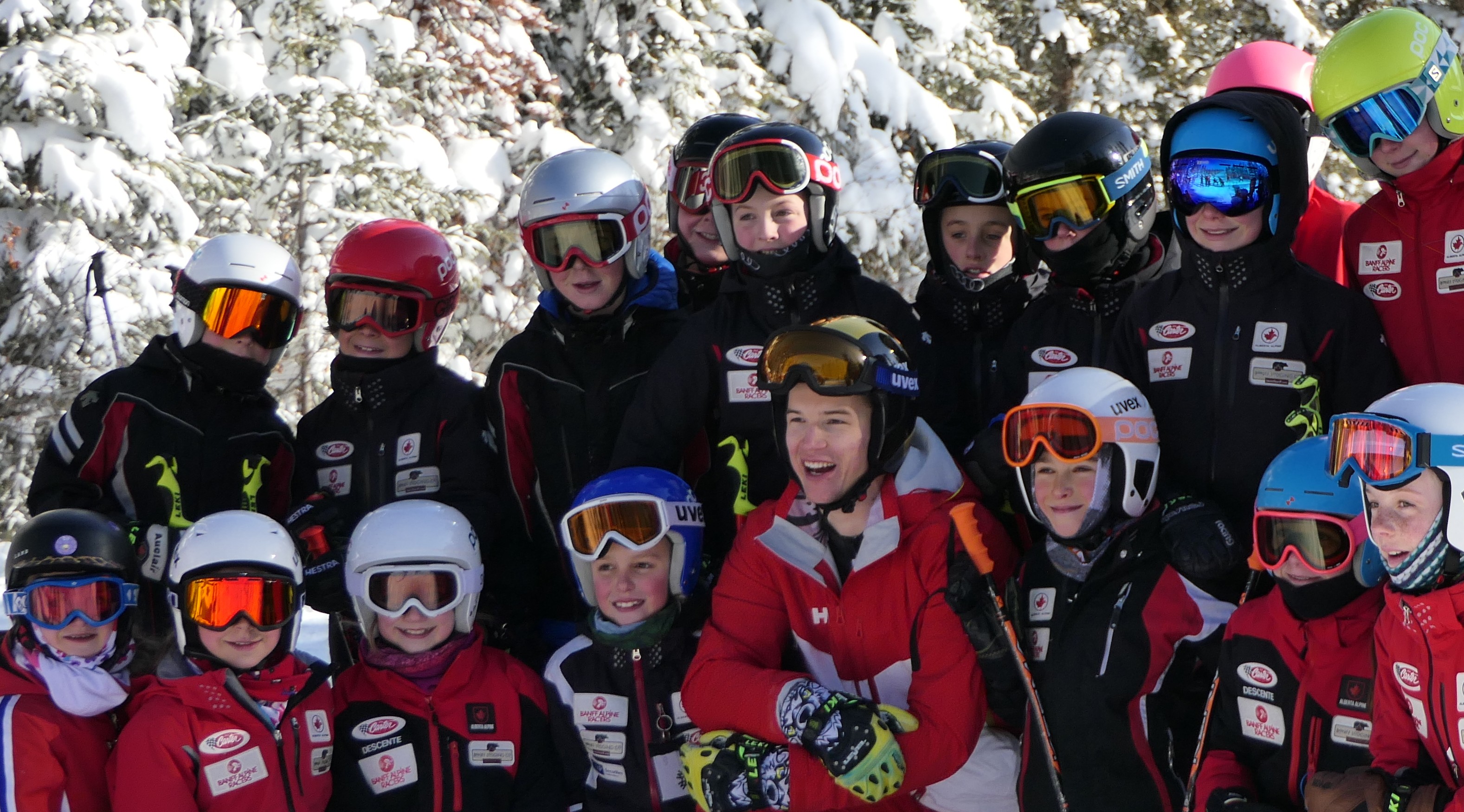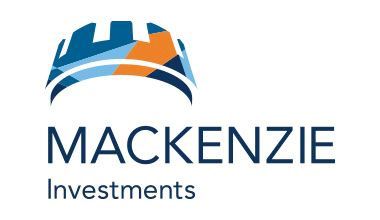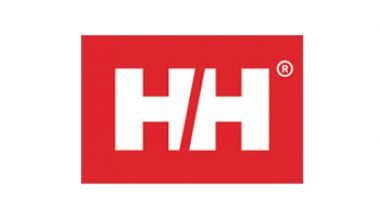Planning for Performance
Performance planning is why you do, what you do when you do it. Skiers of all ages benefit from quality training that is appropriately planned to match their current level of growth and development. Success in ski racing is a result of adequately preparing the various key performance factors including physical fitness, athletic character and intelligence, technical and tactical skill, proper equipment set up as well as good lifestyle and personal habits. Alpine Canada believes proper performance planning will create successful, durable skiers from the Gliding Start through the Race to Win Stages resulting in Skiers for Life.

- Overview
- Performance Planning Principles
- Planning a Training Session
- Quality Sport Experience
- Kaizen - Continous Improvement
OVERVIEW
“This is an amazing day today, to have everything come together like that on race day at the Olympics is incredible and it takes a huge team behind me.” ~ Brady Leman, Canadian Ski Cross athlete after winning the 2018 PyeongChang Winter Olympic Gold Medal in Men's Ski Cross
Behind every successful ski racer is a well-prepared coach and support team who in partnership with the ski racer and their family carefully plan their campaign towards success.
Performance planning is why you do, what you do when you do it. Success in ski racing is a result of adequately preparing the various key performance factors. Variation in an individual skiers training and competition plan will depend on the needs of the ski racer and their specific goals.
Key Performance Factors
- Physical Fitness: Great ski racers are strong, powerful, aerobically and anaerobically fit, agile, excellent at maintaining balance, coordinated, and mobile. A solid fitness foundation allows ski racers to withstand the technical and tactical demands of ski racing.
- Athletic Character & Athletic Intelligence: The difference between a good ski racer and a great ski racer is their mindset and mental approach to training and competition.
- Exceptional Technical Skiing Skills: Great ski racers have developed their athleticism to support the development of their solid technical skiing skill foundation. Ski racers who have excellent technical skiing skills have more adaptability tactically resulting in a more exceptional ability to apply different strategies in the competitive environment.
- Strategic Application of Tactics: Great ski racers can execute strategy on demand during competition due to their athletic intelligence, decision-making skills and application of their technical skiing skills.
- Equipment: Great skiers ensure they have correctly fitted equipment, their skis are adequately sharpened and waxed before every training session, not just on race day. As skiers progress into the competitive pathway, they begin to work with their coaches and manufacturing reps to ensure their equipment set up matches their competitive requirements.
- Lifestyle Management: Great ski racers are excellent at efficiently managing their sleep, nutrition, and educational needs to ensure they are recovering from training and competition bouts. Time management is a critical life and sports performance skill.
Ski racing requires the precise execution of technical skiing skills in various tactical environments. Successful athletic performances are a result of an individuals response to training. The use of performance planning to set appropriate goals at each development stage results in the creation of successful, durable skiers for life.
The one-page PDF summaries provide an overview of the recommended training and competition progression for each stage of development. There are many paths to the podium; skier development is a process and highly individual with each athlete bringing their own set of strengths and weaknesses resulting in variance between training plans and progressions between skiers.
These documents should serve as a guideline, adapted to fit the individual ski racer's needs and expectations in their specific region. However, these documents also serve as a benchmarking tool for ski racers seeking to reach the podium at the elite levels of ski racing.
Performance Planning Principles
"Keep a long-term goal in mind, but pay attention to the details and have as much fun as you can along the way." ~ Erik Read (Rocky Mountain Outlook, 2018).
Performance planning involves the timing, sequence, and interaction of the different training stimuli to promote the best adaptive response in pursuit of specific goals through the use of essential principles.
Setting Goals
Goals provide a central target for effort and provide skiers with a measuring tool to rate their level of success through the use of a proper evaluation process.
Performing an Initial Needs Analysis
Using a skier's goals, coaches conduct a needs analysis to understand the current status of their skier's abilities. The needs analysis identifies areas of improvements, which can be remedied by setting specific improvement goals and the application of appropriate training interventions in the correct sequence at the proper time.
From the last year of the Train to Train stage, the needs analysis should include medical and physiotherapy screening, physical fitness testing, athletic character assessment, evaluation of technical and tactical skills, review of the skier's equipment set up, development stage, and their lifestyle behaviours outside of training and competition.
Periodization & Reverse Planning
Periodization is the planned organization and variation of training into different sequential cycles to match the needs of the ski racer. The goal of periodization is to maintain an adequate training stimulus to bring about the required adaptation while minimizing fatigue or exhaustion (Warrington, 2010).The goals of periodization are to:
- Focus on long-term athlete development and building a strong technical foundation.
- Prioritize training into "need to do" and "nice to do."
- Integrate complementary training at the appropriate times.
- Provide variation in training loads and stress.
- Manage fatigue and avoid overtraining and burnout.
- Achieve a gradual progression towards a performance goal.
- Peak at the right times.
- Prepare for optimal performance improvement (Warrington, 2010).
Using an annual/seasonal planning template, coaches identify the number of months, weeks, days available before a skier's peak event and then the coach plans backwards from that peak race to maintain an adequate training stimulus to bring about the required adaptation while minimizing fatigue or exhaustion.
At the earlier stages of development, coaches in partnership with the skier and their parents identify key events that match the skier's goals. Setting and achieving smaller target goals assists in the maintenance of a proper balance of training to competition ratio and the inclusion of adequate recovery time.
If a skier attends too many competitions, it makes it more difficult to plan their peak performance properly. Some races are sacrificed to peak for the primary goal, and some events serve as training sessions with a specific focus on preparing for peak event.
A ski racer requires adequate time to prepare to compete at the best of their ability for their peak event(s). A ski racer's competition plan should always focus on quality vs. quantity.
Monitoring
The process of performance planning promotes coaches to reflect on the structure of a yearly or seasonal plan, and appropriately sequence training and development priorities to achieve peak performance. Coaches and athletes who are actively engaged in the development process maintain daily training records. Completing a brief evaluation at the end of each training session provides a mini-evaluation of where the skier is currently in the process and if the skier is on target to achieve their goal. Daily journaling can promote self-reflection on the process by the skier if appropriately guided by coaches and parents.
Daily training session monitoring and analysis should include notes on what occurred, training loads and volumes, any changes to the training plan including why, and how well the skier has responded to the training plan. The last reflection point considers to what extent were the training targets achieved and the next steps if the objectives were met or not met. After a complete analysis, modifications are made for the next training day, week(s), month(s), or season to better ensure the skier achieves their overall season goal(s).
Weekly reviews of the compiled daily training records provide a more thorough review allowing for more accurate adjustments to the training plan to improve future training sessions and achievement of success.
Skiers should also perform a daily evaluation using an athletic journal from their perspective. Details include notes about their training sessions, overall rating of the training session, coaching feedback, and a total score of their health and wellness status. A skier's daily journal will vary based on the level of skier and their overall goals as described below.
The parents of younger ski racers in the Gliding Start, Skier Essentials and Learn to Train stages should track the number of hours they participate in sports and physical activity to ensure they are obtaining 60 minutes per day of vigorous physical activity and getting enough recovery time.
Parents should record how their children are feeling before and after skiing by asking them to rate their day or training session using a simple star rating scale where one star means the skier did not have fun and five stars equal a super fun day. Developing the habit of self-reflection using a simple approach will enhance the chances of the self-reflective habit continuing onto the later stages of development.As skiers enter the Train to Train stage, they should be encouraged to complete their athlete journal daily and begin to rate their training session, reflect on the day by rating the overall training session, how they felt during training and competition, fluid, nutritional intakes, stressors, and sleep quality/quantity. More advanced ski racers will record how ready they felt for training or competition, their quality and quantity of sleep, quality of the training session, global energy level, muscle soreness, overall mental state and attitude, level of stress, hydration status and rate their nutritional intake for each day. More advanced skiers in the Train to Race and Race to Win stages will also complete a post-competition reflection worksheet reviewing the competition and actions to achieve in the next race to improve performance.
Parents and skiers are encouraged to share the self-monitoring data with their coaches to ensure a proper amount of stress and recovery are maintained through planned adjustments leading up to the peak event.
Evaluating & Adjusting the Plan
An evaluation of a skiers performance plan should occur with the skier and their parents at regular intervals. Adjustments to the performance plan are made in partnership with all stakeholders during a formal evaluation/review session. Details of the factors that influenced the performance from both a positive and negative aspect are used during the evaluation process to seek continual improvement.
The more a coach and a skier's parents understand the skier's response to training and adjust the plan in cooperation with the skier, the more successful the partnership will become resulting in a build-up of trust in the process and the higher likelihood of the achievement of success by the ski racer. When a team and community support a ski racer, their potential can be genuinely be unlocked.Kaisen
Developing goals is the first step in the planning process. Mapping a route towards the attainment of a goal is critical to the achievement of excellence in ski racing. While the identification of a clear path is essential, there are many paths to the podium. Continous improvement throughout a ski racers journey does not happen by accident.
Coaches, parents, and skiers must continually reflect and adapt to achieve their goals through the use of continuous improvement. Leave no stone unturned, be open to adjustment and change.
Planning a Training Session
Many community sports consist of one hour of non-stop action at the local rink or soccer field two or three times a week making it very easy to accumulate several hours of sport specific skill development time. Most ski racing families in Canada drive long distances to the nearest ski resort to experience time on snow making it more challenging to achieve several hours of skiing skill development on-snow. Lift rides, lunch in the lodge, going in to warm up, etc. are all factors that inhibit time spent skiing. For developing ski racers, twenty runs is considered a big day. In general terms, it takes a more extended amount of time to see ski specific skill improvement.Proper planning assists in the effective use of time on snow to promote the development of a strong technical foundation. While there should be time allowed for free skiing and self-expression on and off-piste, skiing for the soul, accumulating technical free ski time with the goal of improving ski technique is critical to long-term success.
Technical freeskiing, course training, drill skiing, etc. are a part of a typical training day, and the hours spent sitting in the lodge must be minimized. Ski racers should be encouraged to ski all day to take advantage of time on-snow. The development of this culture has to be learned early in the child’s ski racing career.
Peaking for career-making results from ages 6-15 is not the goal, there are several minutes of downtime during a race day apart from the two or three minutes involved in the actual race run. It is essential to freeski before and after the event to maximize time on-snow and promote the continual development of a strong technical foundation. Competition at the early stages of development should focus on developing fundamental skiing skills by gaining mileage while having fun.
It is necessary to build programs around more local days and training sessions outside of the usual weekend sessions on snow, particularly in the earlier stages of development. This again requires parental commitment.
The number of suggested days or sessions on snow in the specific guidelines has been dramatically increased to stress the importance of time on snow in the early years. Again, there will be differences in all regions due to the length of the season, but it is important that clubs understand the responsibility of the critical foundational years of sport and motor skill acquisition.
Quality Sport Experience is FUN!
“It was a different atmosphere from the moment we woke up this morning at 5 am. Britt and I are morning people, and so when the alarm goes off, we are like ok, yeh, good morning, we’re at the Olympics and finally here to race.” ~Kelsey Serwa, Olympic Gold Medalist Women's Ski Cross, 2018 Pyeongchang Winter Olympic Games.
As defined by Sport for Life is, "Quality sport is developmentally appropriate, safe and inclusive and well run. Quality sport is based on Long-Term Athlete Development factors and principles. Quality sport optimizes an individual's potential both athletically and personally. Quality sport enables the optimal holistic development of healthy individuals, who, in turn, can make positive contributions to society".
Good programs that promote the quality sport experience are:
- developmentally appropriate
- participant-centered
- progressive and challenging
- planned and competition is meaningful
Good people, leading well-run programs that promote the quality sport experiences include:
- coaches and officials
- leaders
- parents
- partners
Fun is essential to keeping young skiers involved in ski racing. It's commonly known that attrition from youth sport, in general, is high, as high as 70% (Eitzen & Sage, 2009). This statistic is mostly attributed to negative sport experiences (Fraser-Thomas & Côte, 2006). The number one reason young athletes cite for dropping out of youth sport is that it is no longer "fun." The primary reason they continue to play is that sport participation is "fun" (Visek & Manning, 2014).
Good places, creating good feelings and promoting the quality sport experience include:
- inclusive and welcoming
- fun and fair
- holistic
- safe
Fun is synonymous with Long-Term Athlete Development and retention in the sport of ski racing.
Continuous Improvement
Long-term athletic development is an ongoing process, continually evolving with advancements in sports science, technology, and coaching practices. This document reflects current best practices in ski racing, developed in collaboration between ACA and provincial and territorial organizations, and will be updated to align with shared values and new insights.
The principle of Kaizen, or continuous improvement, underpins the long-term athlete development framework, emphasizing dynamic evolution and refinement. Inspired by industrial philosophies of Homer Sarasohn and W. Edwards Deming, it highlights the importance of adaptability and progress in achieving excellence.
Shared Values for Long-Term Development:
- Foster a supportive, safe, and respectful environment.
- Prioritize the greater good for all athletes with fairness and inclusiveness.
- Emphasize skill development, hard work, and accountability.
- Promote health, fitness, and positive mental preparation.
- Encourage collaboration, cost-effectiveness, and adaptability.
- Recognize multiple paths to success while ensuring fun and quality experiences for all participants.
This evolving framework aims to support Canadian skiers in achieving sustainable success while enjoying the journey.
REFERENCES:
Alpine Canada Performance Planning Coach Workbook (2016).
Eitzen DS, Sage GH. Sociology of North American Sport. 8th ed. Boulder, CO: Paradigm Publishers; 2009.
Fraser-Thomas J, Côte J. Youth sports: implementing findings and moving forward with research. Athl Ins. 2006;8(3):12-27.
Gambetta V. (2007). Athletic Development: The Art & Science of Functional Sports Conditioning. Champaign, IL: Human Kinetics.
McGuigan M. (2017). Monitoring training and performance in athletes. Champaign, IL: Human Kinetics.
Petichkoff LM. Youth sports participation and withdrawal: Is it simply a matter of fun? Pediatr Exercise Sci. 1992;4:105-110.
Willinger, H. Banff Alpine Racers alumnus Read and Philp give back to local club. Rocky Mountain Outlook. Feb. 22 2018.
Visek AJ, Manning HM. The FUN MAPS: A Youth Sport Scientific Breakthrough. Olympic Coach. 2014;25(4):39-42.
Visek AJ, et al. The Fun Integration Theory: Toward Sustaining Children and Adolescents Sport Participation. Journal of Physical Activity and Health. 2015;12:424-433
Warrington, G. Dr. (2010). Planning for Performance http://www.sportireland.ie/Coaching-Ireland/Publications-/Planning-For-Performance.pdf . Coaching Ireland.


